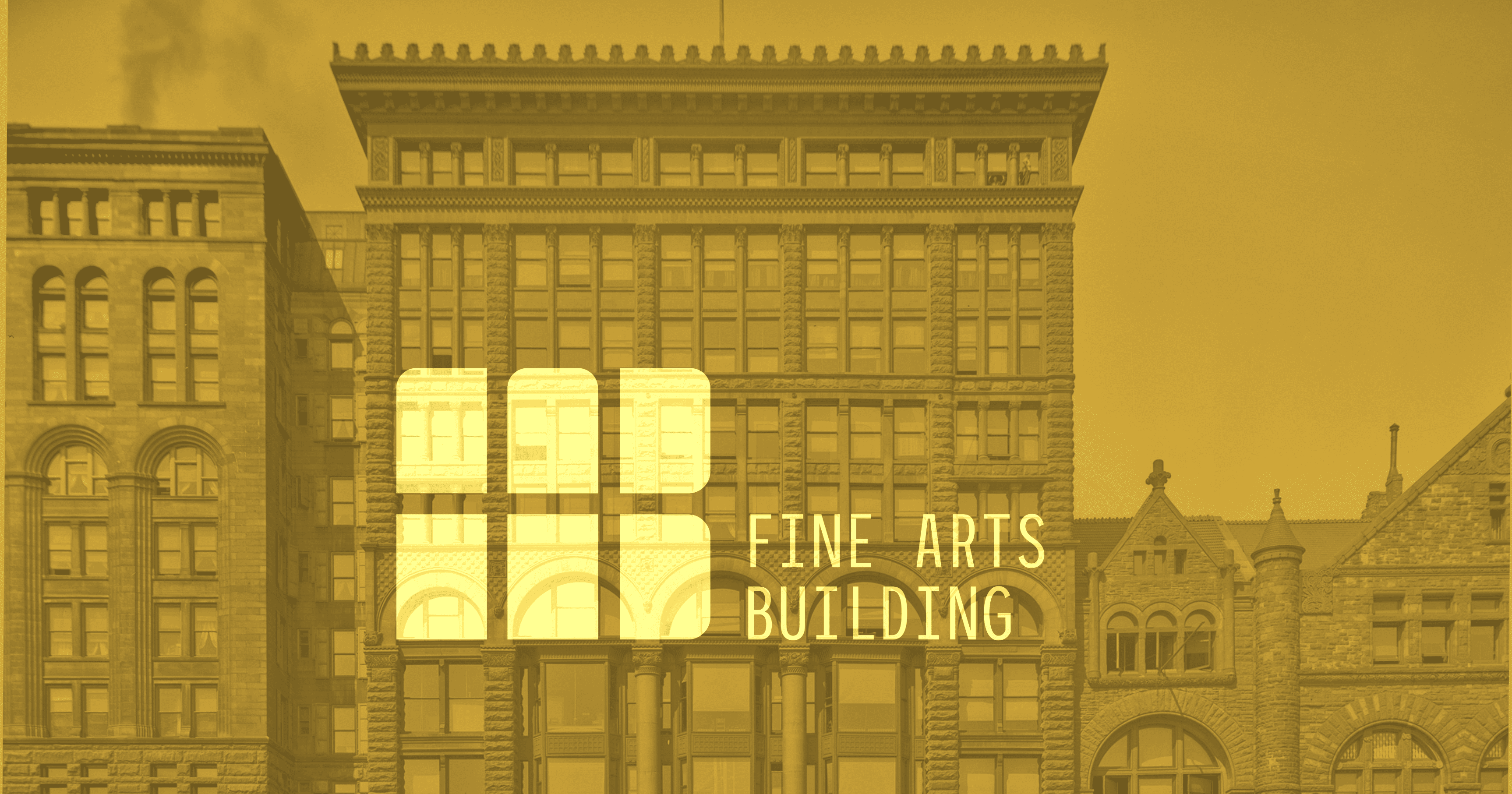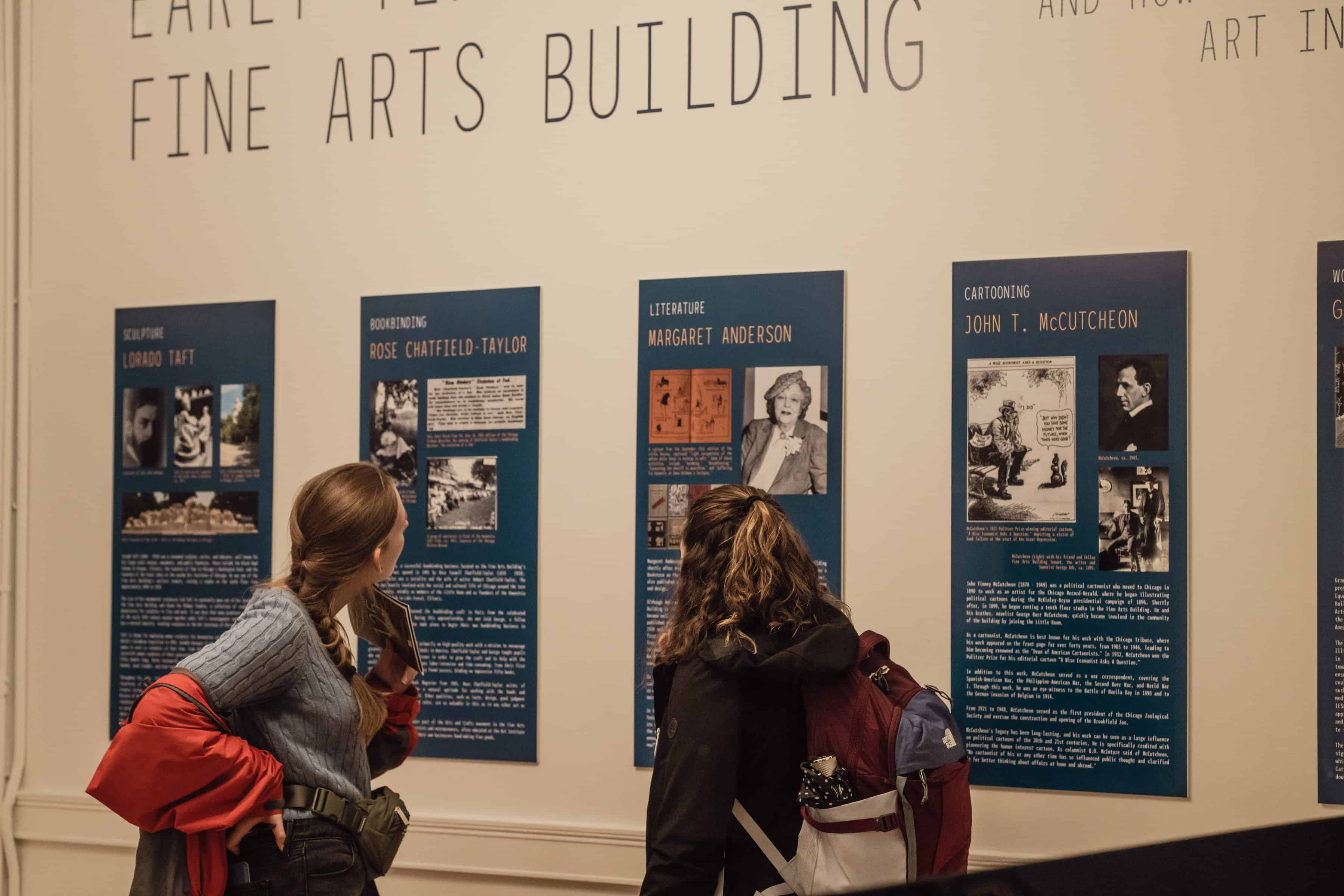Exploring Chicago's Creative Heart: The Fine Arts Building
Step inside a true Chicago treasure, the fine arts building, a place where creativity truly lives. This remarkable spot, right in the heart of downtown, has been a vibrant home for artists and their amazing work for well over a century. It's not just a structure; it's a living, breathing part of the city's artistic soul, a place that continues to inspire and welcome everyone who walks through its grand doors. Really, it's something special.
From its very beginnings, the fine arts building has played a big part in Chicago's story. It started out with a completely different purpose, you know, but then it transformed into this incredible hub. Over the years, it has seen countless artists, thinkers, and performers come and go, each leaving their mark. It's a spot where history and art just kind of blend together, creating an atmosphere you can almost feel.
What makes the fine arts building so special, in a way, is its open-door policy. It's free for anyone to explore, seven days a week, which is pretty cool. This accessibility means that everyone, from curious visitors to seasoned art lovers, can experience its unique charm and discover the magic held within its walls. It's a place that genuinely invites you in, offering a peek into a world of artistic expression.
The fine arts building, standing proudly at 410 S Michigan Ave in Chicago, is much more than just an old structure. It's a landmark, a gathering spot, and a constant source of inspiration for so many. This place, which has been a vital part of the city's creative scene since 1898, holds countless stories within its brick walls. It’s a bit like a vertical arts colony, where different forms of expression live side-by-side.
You know, for a building that’s been around so long, it has a surprisingly rich and varied past. It’s got this quiet presence, low on a street of much taller buildings, and it kind of peeks out between the grand Auditorium Theatre and other big structures. It’s a spot that, quite honestly, you might walk past without realizing the depth of its history or the artistic energy that still buzzes inside. But once you step in, it’s like discovering a whole new world.
Table of Contents
- From Carriages to Canvases: A Building's Remarkable Journey
- A Living Canvas: What You'll Find Inside the Fine Arts Building
- A Hub of History and Movements
- Planning Your Visit to This Chicago Gem
- Celebrating a Legacy: Recent Recognitions
- Frequently Asked Questions About the Fine Arts Building
From Carriages to Canvases: A Building's Remarkable Journey
The story of the fine arts building is pretty fascinating, honestly. It began its life with a completely different purpose. Back in 1885, this very spot was a carriage assembly plant and showroom for the Studebaker Company. Can you imagine? Horses and buggies, right there where artists now create their masterpieces. It was designed by a person named Solon Spencer Beman, and it really served its initial purpose for a while.
But the Studebaker business, you know, it just kind of outgrew the space. So, by 1898, something big happened. There was this huge remodeling effort that completely changed the building's destiny. It was converted into what it is today: a home for the arts. This transformation marked the beginning of its long and storied life as Chicago's creative heart, a place where artists could gather and work.
This shift from a place of transportation to a place of inspiration is a rather unique part of its history. It’s not every day you see a building make such a dramatic change in its purpose, is that right? This early history, too, gives the fine arts building a certain charm, a sense of having witnessed so many different eras and purposes within the city.
A Living Canvas: What You'll Find Inside the Fine Arts Building
Today, the fine arts building is a lively place, bustling with creative energy. It's an artist's haven, and it's been that way since 1898. When you step inside, you’ll find a wide variety of artistic endeavors happening all at once. It's truly a home for art in just about all its forms, which is pretty cool.
You might discover artists’ lofts, where painters are at work, or sculptors shaping their next piece. There are art galleries showcasing incredible works, and spaces where dance and other performing arts come alive. It's a place where you can genuinely feel the creative spirit, almost like it's in the air around you. This constant activity makes it a very dynamic spot to explore.
The Majestic Studebaker Theater
One of the true gems within the fine arts building is the majestic Studebaker Theater. This historic venue is a central part of the building’s artistic offerings. It hosts a wide range of performances, bringing music, drama, and other live acts to audiences. It’s a really important part of Chicago’s performing arts scene, and it helps to bring the building’s artistic mission to life.
The American Writers Museum, for example, has presented programs there, like "American Prophets: Writers, Religion and Culture at the Studebaker Theater with the program Faith is Funny." This shows just how versatile the theater is, hosting everything from music to discussions about literature and culture. It’s a very significant part of what makes the fine arts building such a vibrant cultural hub.
A Home for All Forms of Art
Beyond the theater, the fine arts building is home to a diverse community of creatives. You'll find painters, musicians, and sculptors, of course, but it doesn't stop there. There are also yoga studios, puppeteers, and even therapists and coaches who make their home here. It’s a really interesting mix of people and professions, all contributing to the building's unique character.
This variety is what makes it a true vertical arts colony. It's a place where different creative minds can connect, share ideas, and inspire each other. This kind of environment is quite rare, and it’s part of what makes the fine arts building one of Chicago's biggest treasures. It's a spot where you can truly see art in all its many forms, and that’s pretty special.
A Hub of History and Movements
The fine arts building isn't just about art; it also played a quiet but important role in broader social movements. In the Midwest, it became a home to both the women’s suffrage movement and the arts and crafts movement. Think about that for a moment: a place where people gathered to fight for important social change, alongside those dedicated to beautiful craftsmanship.
This historical connection adds another layer to the building's significance. It shows how it was not only a center for artistic expression but also a place where important ideas and social progress took root. This rich history is part of what makes exploring the fine arts building such a compelling experience. You're walking through spaces where history was, in a way, being made.
Keir Graff, an author, has even traced the many legacies of this city’s vibrant culture hub, touching on music, magic, and even murder in his writings. This just goes to show how deeply intertwined the fine arts building is with Chicago's wider cultural narrative. It’s a place with many stories, some known, some still waiting to be fully discovered.
Planning Your Visit to This Chicago Gem
If you're thinking about visiting this incredible place, you're in luck! The fine arts building is free and open to the public seven days a week. This makes it really easy to just drop in and explore whenever you have some free time. It's a fantastic option for a casual outing, or for those who want to spend more time soaking in the atmosphere.
You can find the building at 410 S Michigan Ave. It's quite centrally located in downtown Chicago, which means it’s pretty simple to get to. You can plan your visit by checking out information about its location and hours, directions, and even parking options. There's also information about access, which is always helpful to know before you go.
For those who really want to get a feel for the place, you might consider taking an exclusive tour inside the fine arts building. These tours let you explore the studios that once hosted influential artists, musicians, and writers, giving you a deeper look into its past. You can even download a printable map to help you navigate its 125 years of incredible history, which is a nice touch.
Celebrating a Legacy: Recent Recognitions
The fine arts building recently hit a pretty big milestone. In 2023, it celebrated its 125th anniversary. That’s a really long time for a building to be such a central part of a city’s creative life, isn't it? To mark this special occasion, Mayor Brandon Johnson did something truly wonderful: he proclaimed October 13 as Fine Arts Building Day in Chicago.
This official recognition is a huge source of pride for everyone connected with the building. It’s a way to truly showcase local Chicago artists alongside international guest artists, helping to enrich the city by ensuring a robust and diverse performing arts scene. It shows just how much the fine arts building means to Chicago, and how it continues to be a cornerstone of the city’s vibrant art community.
The building also takes part in events like the Chicago Architecture Center’s Open House Chicago. This gives people an exciting weekend of architectural discoveries, allowing them to see parts of the building they might not otherwise. These events help to keep the fine arts building a lively and relevant part of Chicago's cultural calendar, always offering something new to explore.
Frequently Asked Questions About the Fine Arts Building
People often have questions about this unique Chicago landmark. Here are some common inquiries:
What is the Fine Arts Building in Chicago known for?
The fine arts building in Chicago is known as a long-standing creative hub and artist haven since 1898. It houses artists’ studios, art galleries, dance spaces, and the majestic Studebaker Theater. It's also recognized for its historical connection to the women’s suffrage and arts and crafts movements in the Midwest. It’s a vertical arts colony, you know, a very special place.
When was the Fine Arts Building originally built?
The fine arts building was originally designed by Solon Spencer Beman and opened in 1885 as a carriage assembly plant and showroom for the Studebaker Company. It underwent an extensive remodeling in 1898, converting it into the arts home it is today. So, it has a bit of a dual history, in a way.
Is the Fine Arts Building open to the public?
Yes, the fine arts building is free and open to the public seven days a week. Visitors are welcome to explore its common areas, galleries, and experience its unique artistic atmosphere. There are also tours available, and sometimes, you can catch performances at the Studebaker Theater.
- Painted Park Atlanta
- Rising Sign Sagittarius
- Court Street Restaurant Bar
- Trump Farts
- Kendall Rogers Twitter

Fine Arts Building | Home | Chicago's artist haven since 1898.

Fine Arts Building | Home | Chicago's artist haven since 1898.

Contact Us | Fine Arts Building